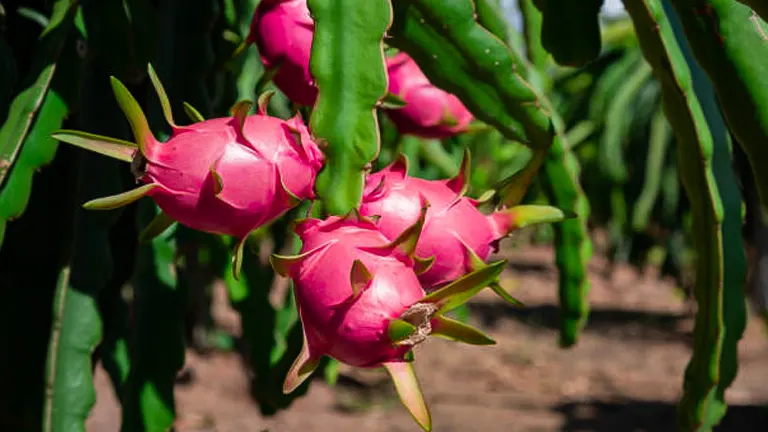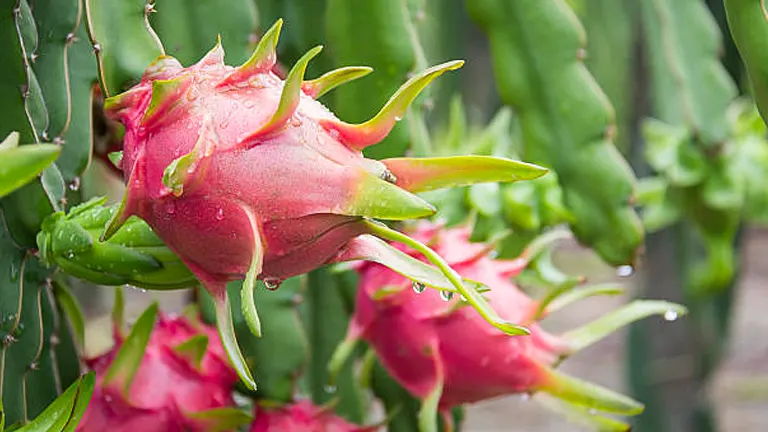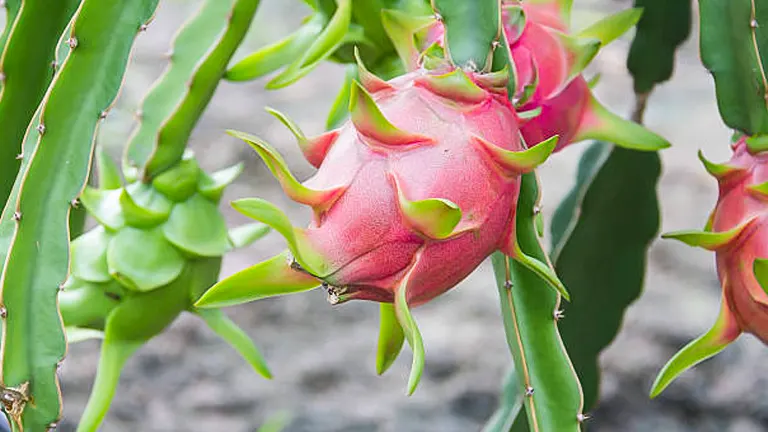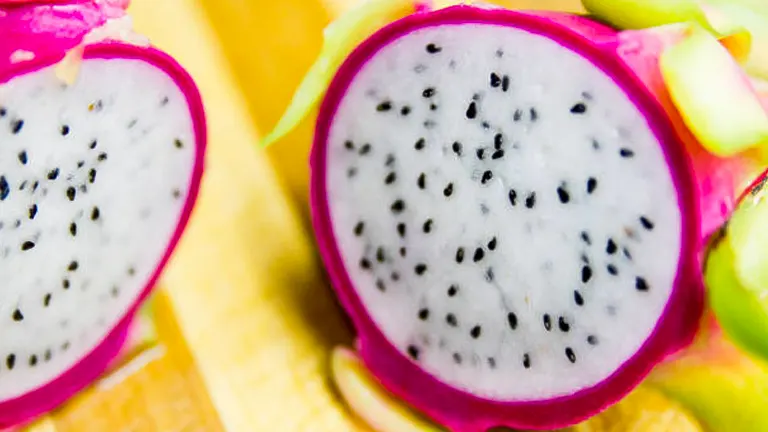How to Grow and Care for Dragon Fruit: Avoid Common Pitfalls for Perfect Results
- May 24, 2024
- 0 comment
Learn how to grow and care for dragon fruit, avoid pitfalls, and secure lush, perfect results. Start your successful cultivation today. Growing dragon fruit can be a rewarding venture, but it comes with its set of challenges. This guide will walk you through the crucial steps and important precautions to ensure your dragon fruit plants thrive.

From selecting the right soil to understanding proper watering techniques, we’ll cover everything you need to know to avoid common pitfalls and achieve the perfect results you’re aiming for. Let’s embark on this fruitful journey together and transform your gardening experience.
Table of Contents
- Understanding Dragon Fruit
- Optimal Growing Conditions
- Planting Dragon Fruit
- Essential Care Techniques
- Common Pitfalls and How to Avoid Them
- Harvesting and Post-Harvest Care
- Troubleshooting Common Issues
- Advanced Tips for Experienced Gardeners
- Conclusion
- FAQs
Understanding Dragon Fruit
Types and Varieties

Dragon fruit, scientifically known as Hylocereus spp., is a member of the cactus family that flourishes in warm, subtropical to tropical climates. The two most common types of dragon fruit are:
- Hylocereus undatus: Known for its white flesh and pink-red skin, this variety is the most widely cultivated globally. It is appreciated for its mildly sweet flavor and large size.
- Hylocereus costaricensis: This variety stands out with its vibrant red flesh and darker red skin. It offers a sweeter and more robust flavor compared to H. undatus.
In addition to these, there is also Hylocereus megalanthus, which produces yellow-skinned fruit with white flesh, known for its slightly tart flavor.
Key Characteristics
Dragon fruit plants are characterized by their sprawling, vine-like growth and large, ornate, nocturnal flowers, which can be over 30 cm in length. As climbing cacti, they require support structures like trellises as they mature to maintain health and productivity. These plants are generally hardy but have specific vulnerabilities:
- Temperature Sensitivity: They thrive between 20°C to 30°C and require minimal frost exposure.
- Soil Preference: Well-draining soil is crucial, as their root systems are susceptible to rot in overly saturated conditions.
Nutritional Benefits
Dragon fruit is not only visually appealing but also packed with nutritional benefits. It is a good source of vitamin C, carotene, and proteins, which enhance the immune system and metabolic functions. The fruit is rich in several antioxidants, including flavonoids, phenolic acid, and betacyanin, which combat oxidative stress and inflammation. Dragon fruit’s high fiber content promotes digestive health and aids in maintaining blood sugar levels.
| Variety | Skin Color | Flesh Color | Flavor | Average Weight | Vitamin C Content |
|---|---|---|---|---|---|
| Hylocereus undatus | Pink-Red | White | Mildly Sweet | 350-500 grams | 9.2 mg per 100g |
| Hylocereus costaricensis | Dark Red | Red | Sweet | 400-600 grams | 10.6 mg per 100g |
| Hylocereus megalanthus | Yellow | White | Slightly Tart | 250-400 grams | 8.4 mg per 100g |
Optimal Growing Conditions
Climate Requirements

Dragon fruit thrives in subtropical and tropical climates but can adapt to a range of environmental conditions. Optimal growth occurs at temperatures between 68°F and 86°F (20°C to 30°C), with relative humidity levels of 50-70%. These conditions mimic the dragon fruit’s native environment, minimizing stress and promoting healthy growth cycles. Extended exposure to temperatures below 32°F (-0°C) can damage the plant, while excessive heat above 100°F (38°C) can inhibit pollination and fruit development.
Light Requirements
Dragon fruit plants require substantial sunlight to photosynthesize effectively and produce fruit. Ideally, plants should receive at least 6-8 hours of direct sunlight daily. In regions with intense midday sun, partial shade during peak hours (10 AM to 4 PM) can prevent leaf burn and fruit damage, which might otherwise reduce the plant’s productivity and longevity.
Soil Requirements
The root system of dragon fruit is particularly sensitive to water-logging, thus requiring well-draining soil to prevent root rot. Ideal soil is a sandy-loam mix with good organic content, ensuring both drainage and nutrient availability. The optimal pH range for dragon fruit soil is between 6.0 and 7.0, slightly acidic to neutral, which facilitates optimal nutrient uptake.
| Condition | Ideal Range | Notes |
|---|---|---|
| Temperature | 68°F – 86°F (20°C – 30°C) | Frost-sensitive; prolonged cold leads to tissue damage. |
| Relative Humidity | 50% – 70% | High humidity supports growth but requires good air circulation. |
| Sunlight Exposure | 6-8 hours daily | Partial shade beneficial in peak summer to prevent scorching. |
| Soil Type | Sandy-loam | Must offer good drainage to avoid root issues. |
| Soil pH | 6.0 – 7.0 | Slightly acidic to neutral pH optimizes nutrient absorption. |
Planting Dragon Fruit
Choosing Between Seeds and Cuttings

Dragon fruit can be propagated from seeds or cuttings, with each method offering distinct advantages and challenges:
- Seeds: While growing from seeds can be rewarding and ensure genetic diversity, it typically requires several years before the plants mature and produce fruit. Germination rates and growth can be variable and slower.
- Cuttings: This method is favored for commercial and home gardening due to its quicker establishment and earlier fruit production. Cuttings taken from healthy, mature plants generally replicate the parent’s characteristics, ensuring consistency in fruit quality.
Planting Guide
- Preparation: For cuttings, allow the cut end to dry and callus over for 3-7 days in a dry, shaded area to prevent fungal infections when planted.
- Soil and Pot: Choose a high-quality, well-draining potting mix rich in organic material. Ensure pots have sufficient drainage holes. For in-ground planting, amend the soil with sand and compost to improve drainage and fertility.
- Planting Depth and Orientation: Insert cuttings about 2-4 inches deep into the soil, ensuring they are upright. For seeds, lightly cover with soil to about 0.5 inches deep.
- Spacing: Provide ample space to accommodate the mature size of the plant:
- Medium-Density Orchards: Space plants approximately 8-10 feet apart.
- High-Density Orchards: Reduce spacing to about 5-6 feet, monitoring for adequate air circulation and sunlight exposure.
Initial Care
- Watering: Initially, water the plants lightly to moisten the soil without causing waterlogging. Thereafter, maintain consistent moisture, especially in the first month, to support root establishment.
- Shading: Provide temporary shade to protect young plants from intense midday sun, which can stress or damage delicate tissues.
Planting Metrics for Dragon Fruit
| Parameter | Seeds | Cuttings |
|---|---|---|
| Germination Time | 15-30 days | N/A |
| First Fruit | 5-7 years | 1-3 years |
| Planting Depth | 0.5 inches | 2-4 inches |
| Ideal Soil pH | 6.0 to 7.0 | 6.0 to 7.0 |
| Spacing (Medium) | 8-10 feet | 8-10 feet |
| Spacing (High) | 5-6 feet | 5-6 feet |
Essential Care Techniques
Watering

Dragon fruit’s watering needs vary significantly over its growth cycle. Initially, young plants require consistent moisture to establish their root systems:
- Seedlings and Cuttings: Water every 2-3 days, maintaining evenly moist soil.
- Established Plants: Water deeply once a week, allowing the top 1-2 inches of soil to dry out slightly between watering sessions. This encourages deeper root growth, which is crucial for drought tolerance.
- Winter Care: Reduce watering frequency to every other week, depending on rainfall and temperature, to prevent root rot during cooler months.
Fertilizing
Proper fertilization is critical for maximizing fruit production and overall plant health:
- Growth Phase: Use a balanced NPK (Nitrogen-Phosphorus-Potassium) fertilizer monthly during the active growing season.
- Flowering and Fruiting: Increase phosphorus and potassium levels to promote flowering and fruit development. A recommended ratio during this phase is 10-30-20 (N-P-K).
- Avoid Over-Fertilization: Excessive nitrogen can lead to vigorous vegetative growth at the expense of fruiting, potentially increasing susceptibility to pests and diseases.
Support Structures
Due to their climbing nature, dragon fruit plants require sturdy support structures:
- Trellises: Install trellises at planting to support growth and spread. This mimics their natural climbing behavior, allowing plants to receive more sunlight and air circulation.
- Staking: For smaller gardens, stakes can be used to support individual plants, helping to keep fruits off the ground and reducing disease exposure.
Pruning
Pruning is essential for maintaining plant health and optimizing fruit production:
- Timing: The best time to prune is late winter or early spring, before the new growth starts.
- Technique: Remove any dead, diseased, or overcrowded branches to improve structure and airflow. Focus on shaping the plant to allow sunlight to reach the interior.
- Shaping: Create an open canopy to maximize light penetration and air movement throughout the plant, which is crucial in reducing the risk of fungal diseases and improving fruit quality.
Essential Care Guidelines for Dragon Fruit
| Care Aspect | Details | Frequency/Timing | Notes |
|---|---|---|---|
| Watering | Deep watering, allow to dry out | Weekly in summer, bi-weekly in winter | Adjust based on soil moisture |
| Fertilizing | Higher P-K during fruiting | Monthly during growing season | Avoid high nitrogen blends |
| Support Structures | Trellises or stakes | Install at planting | Essential for climbing cacti |
| Pruning | Remove non-productive growth | Late winter or early spring | Promotes fruiting and reduces disease |
Common Pitfalls and How to Avoid Them
Overwatering and Underwatering

Maintaining the correct moisture balance is crucial for dragon fruit, as both overwatering and underwatering can lead to serious health issues for the plant.
- Signs of Overwatering: Yellowing leaves, soft rotting at the stem base, and a general lack of flowering. Overwatered roots often suffer from oxygen depletion, leading to anaerobic conditions favorable for harmful pathogens.
- Signs of Underwatering: Symptoms include dry, brittle stems, drooping leaves, and slowed or stunted growth. Underwatered plants cannot efficiently photosynthesize or transport nutrients.
Solution: Implement a watering regimen based on soil type and local climate conditions. Use a soil moisture meter for accuracy, aiming to maintain moisture at a depth of about 1-2 inches. Adjust frequency seasonally: more frequent watering in hot, dry months and reduced in cooler, wet months.
Nutrient Deficiencies
Nutrient imbalances can significantly affect plant vigor and fruit quality.
- Symptoms: Chlorosis (leaf yellowing) indicates a nitrogen deficiency, purpling of leaf bases may suggest phosphorus deficiency, and weak stems and slow growth typically point to a lack of potassium.
- Correction: Conduct soil tests bi-annually to monitor nutrient levels and pH. Use a specialized cactus fertilizer with a balanced NPK ratio, or consider organic options like compost or worm castings which release nutrients slowly and improve soil structure.
Pest and Disease Management
Pests and diseases can derail even the most carefully maintained gardens.
- Common Pests: Include spider mites, which cause fine webbing and speckled leaves; aphids, which excrete sticky honeydew attracting ants and sooty mold; and mealybugs, which cluster in leaf joints and stem axils.
- Disease Concerns: Common diseases include stem rot, often a result of fungal infections, and botrytis (grey mold), particularly in humid conditions.
- Preventive Measures: Employ integrated pest management (IPM) strategies like introducing beneficial insects (e.g., ladybugs for aphid control) and applying neem oil or other organic fungicides. Regularly remove plant debris to reduce disease incidence.
Management Strategies for Common Pitfalls
| Issue | Signs/Symptoms | Management Strategy | Tools/Products Used |
|---|---|---|---|
| Overwatering | Yellowing leaves, soft rot | Reduce frequency, improve drainage | Soil aerators, moisture meters |
| Underwatering | Dry stems, drooping leaves | Increase watering consistency, check soil moisture levels | Soil moisture meters, drip irrigation |
| Nutrient Deficiency | Chlorosis, slow growth | Adjust fertilizer use based on soil test results | Balanced fertilizers, soil test kits |
| Pests | Webbing on leaves, sticky residues | Introduce beneficial insects, use organic pesticides | Neem oil, insecticidal soaps |
| Diseases | Soft rot, grey mold on stems and fruit | Apply fungicides, ensure good air circulation | Organic fungicides, pruning tools |
Harvesting and Post-Harvest Care
Harvesting Signs

Dragon fruit reaches peak ripeness with several observable changes:
- Skin Color: Transition from bright green to vibrant red or pink, indicating the development of natural sugars and flavor compounds.
- Texture: The fruit yields slightly under gentle pressure but remains firm, reflecting optimal internal texture and juice content.
- Wing Condition: The bracts or ‘wings’ on the fruit start to wither and dry, which is a reliable indicator of ripeness.
Techniques for Harvesting
Proper technique is crucial to ensure fruit quality and plant health:
- Tool Selection: Use a sharp, clean knife or scissors to cut the fruit at the stem, about an inch from the fruit’s base to avoid damaging the plant and the fruit.
- Handling: Support the fruit with your free hand to prevent it from falling and bruising. Gentle handling is essential to maintain the fruit’s aesthetic and edible quality.
Storage and Usage
Post-harvest care is vital to preserve the fruit’s nutritional properties and extend its shelf life:
- Immediate Cooling: Chill the fruit as soon as possible to around 5°C to slow down the respiration rate and degradation processes.
- Refrigeration: Store dragon fruit in the refrigerator for up to two weeks. The fruit should be kept in a perforated plastic bag to allow some air circulation while maintaining high humidity.
- Usage: Dragon fruit is versatile in culinary applications. It is delightful when eaten fresh, and its subtle sweetness enhances smoothies, salads, and desserts.
Nutritional Changes and Storage Guidelines
| Storage Duration | Temperature | Relative Humidity | Vitamin C Content (mg per 100g) | Antioxidant Activity |
|---|---|---|---|---|
| Fresh | Room Temp | – | 10.6 | High |
| 1 Week | 5°C | 90-95% | 9.8 | Moderately High |
| 2 Weeks | 5°C | 90-95% | 9.0 | Moderate |
Troubleshooting Common Issues
Non-Fruiting Plants
- Causes: Insufficient light, inadequate pollination, or immature plants.
- Solutions: Ensure your dragon fruit receives enough sunlight, consider hand pollination if natural pollinators are scarce, and be patient with young plants, which may take several years to start producing fruit.
Environmental Stress
- Sunburn: Characterized by scorched or bleached areas on the fruit and leaves.
- Prevention: Provide partial shade during the hottest parts of the day, especially in very sunny climates.
- Frost Damage: Symptoms include darkened, mushy spots on leaves and stems.
- Protection: Cover your plants with frost cloth or move potted plants indoors during cold snaps.
Stunted Growth or Abnormal Development
- Potential Causes: Root bound plants, compacted soil, or genetic issues.
- Interventions: Repot plants into larger containers or refresh the garden soil with new, nutrient-rich mix. If genetic issues are suspected, propagate from a different, healthy mother plant.
Advanced Tips for Experienced Gardeners
Maximizing Yield
- Pollination Techniques: Hand pollination can significantly increase fruit set. Use a small paintbrush to transfer pollen from flower to flower during the night when these flowers are open.
- Nutrient Management: Beyond balanced fertilizers, consider adding bone meal or potassium sulfate to enhance flowering and fruiting capabilities.
Breeding and Propagating New Varieties
- Cross-Pollination: Experiment with cross-pollinating different varieties to develop unique flavors, colors, and resistance traits.
- Cutting Propagation: Select vigorous, healthy cuttings to propagate new plants, ensuring genetic diversity and resilience in your garden.
Organic Cultivation Practices
- Soil Health: Maintain soil health with regular additions of organic compost and mulch, which also help retain moisture and suppress weeds.
- Pest Management: Utilize natural predators like ladybugs for aphids and neem oil as a fungicide and pesticide, embracing a holistic approach to pest and disease management.
Related Post
- How to Build a Barn: A Step-by-Step Guide for Beginners
- How to Build a Sustainable Compost Bin: Easy and Eco-Friendly DIY
- How to Fertilize Bougainvillea: A Complete Guide for Stunning Blooms
- How to Fertilize Apple Trees: Essential Tips for a Bountiful Harvest
- How to Fertilize Lemon Trees: Secrets for Thriving Citrus
- How to Fertilize Avocado Tree: A Step-by-Step Guide for Lush Growth
- 10 Best Bow Saws to Buy in 2024: Top Picks for the Money
- Best Miter Saw For Beginners
- Top 10 Pruning Saws to Buy in 2024: Best for the Money
- 7 Best Pocket Chainsaw
Conclusion
Growing dragon fruit is a rewarding endeavor that brings beauty and flavor to your garden. By understanding the specific needs of these unique plants and being vigilant about common pitfalls, you can enjoy lush growth and bountiful harvests. Remember, each plant has its own personality, so stay observant and responsive to its signals.
FAQs
- What is the best time of year to plant dragon fruit cuttings?
The optimal time to plant dragon fruit cuttings is during the spring when the threat of frost has passed and temperatures begin to rise. This timing gives the plant a full growing season to establish itself before winter. - How often should I water my dragon fruit plants?
Water your dragon fruit plant once a week during the growing season, allowing the top inch of soil to dry out between waterings. Reduce the frequency during the winter or rainy seasons to prevent root rot. - Can dragon fruit be grown indoors?
Yes, dragon fruit can be grown indoors provided it has sufficient light. It needs about 6-8 hours of sunlight or bright light per day, so a south-facing window or a grow light is necessary. - What are the signs that dragon fruit is ready to harvest?
Dragon fruit is ready to harvest when its skin color changes from green to red or pink, and the fruit gives slightly under gentle pressure. The wings on the fruit will begin to shrivel and brown at the edges when it’s ripe. - How do I hand pollinate dragon fruit flowers for better fruit set?
To hand pollinate dragon fruit, use a small paintbrush or cotton swab to transfer pollen from the stamen of one flower to the stigma of another. This is best done at night since dragon fruit flowers are nocturnal. - What common pests should I watch out for, and how can I manage them organically?
Common pests include spider mites, aphids, and mealybugs. Manage these organically by introducing natural predators like ladybugs, applying neem oil, or washing the plants with a mild soap solution. - How can I increase the sweetness of my dragon fruit?
To increase sweetness, ensure your dragon fruit gets adequate sunlight and water, and use a potassium-rich fertilizer during the fruiting stage. Consistent care and avoiding overwatering are key factors. - Is it necessary to use a trellis for dragon fruit plants, and why?
Yes, using a trellis is necessary because dragon fruit is a climbing vine. A trellis supports the plant’s weight, aids healthy growth, and improves air circulation, which is crucial for reducing disease risk and supporting fruit development.
Thank you for joining us on this journey to mastering the art of growing dragon fruit. With these tips and techniques, you’re well-equipped to navigate the challenges and enjoy the rewards of a thriving dragon fruit garden. Happy gardening!

Kristine Moore
Forestry AuthorI'm Kristine Moore, a seasoned garden landscaping professional with over 30 years of experience. My extensive career has been dedicated to transforming outdoor spaces into stunning, sustainable landscapes. With a deep understanding of horticulture, design principles, and environmental stewardship, I have become a respected figure in the field, known for creating harmonious, visually appealing, and eco-friendly gardens. My commitment to excellence and continuous learning in landscaping trends and techniques has solidified my reputation as an expert in garden design and implementation.













Leave your comment